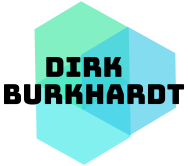2011 |
||||
| 16. | 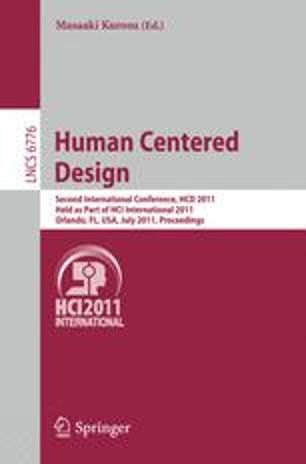 | Burkhardt, Dirk; Nazemi, Kawa; Breyer, Matthias; Stab, Christian; Kuijper, Arjan SemaZoom: Semantics Exploration by Using a Layer-Based Focus and Context Metaphor Proceedings Article In: Kurosu, Masaaki (Ed.): Human Centered Design, pp. 491–499, Springer, Berlin, Heidelberg, Germany, 2011, ISBN: 978-3-642-21753-1. Abstract | Links | BibTeX | Dimensions | PlumX | Tags: Human-Computer-Interfaces, Information Visualization, Semantic Web, Semantics Visualization @inproceedings{Burkhardt2011b,The Semantic Web is a powerful technology for organizing the data in our information based society. The collection and organization of information is an important step for showing important information to interested people. But the usage of such semantic-based data sources depends on effective and efficient information visualizations. Currently different kinds of visualizations in general and visualization metaphors do exist. Many of them are also applied for semantic data source, but often they are designed for semantic web experts and neglecting the normal user and his perception of an easy useable visualization. This kind of user needs less information, but rather a reduced qualitative view on the data. These two aspects of large amount of existing data and one for normal users easy to understand visualization is often not reconcilable. In this paper we create a concept for a visualization to show a bigger set of information to such normal users without overstraining them, because of layer-based data visualization, next to an integration of a Focus and Context metaphor. | ||
| 15. |  | Nazemi, Kawa; Burkhardt, Dirk; Praetorius, Alexander; Breyer, Matthias; Kuijper, Arjan Adapting User Interfaces by Analyzing Data Characteristics for Determining Adequate Visualizations Proceedings Article In: Kurosu, Masaaki (Ed.): Human Centered Design, pp. 566–575, Springer, Berlin, Heidelberg, Germany, 2011, ISBN: 978-3-642-21753-1. Abstract | Links | BibTeX | Dimensions | PlumX | Tags: Adaptive Visualization, Human-Centered Interfaces, Human-Computer-Interfaces, Semantics Visualization @inproceedings{Nazemi2011d,Today the information visualization takes in an important position, because it is required in nearly every context where large databases have to be visualized. For this challenge new approaches are needed to allow the user an adequate access to these data. Static visualizations are only able to show the data without any support to the users, which is the reason for the accomplished researches to adaptive user-interfaces, in particular for adaptive visualizations. By these approaches the visualizations were adapted to the users' behavior, so that graphical primitives were change to support a user e.g. by highlighting user-specific entities, which seems relevant for a user. This approach is commonly used, but it is limited on changes for just a single visualization. Modern heterogeneous data providing different kinds of aspects, which modern visualizations try to regard, but therefore a user often needs more than a single visualization for making an information retrieval. In this paper we describe a concept for adapting the user-interface by selecting visualizations in dependence to automatically generated data characteristics. So visualizations will be chosen, which are fitting well to the generated characteristics. Finally the user gets an aquatically arranged set of visualizations as initial point of his interaction through the data. | ||
| 14. | 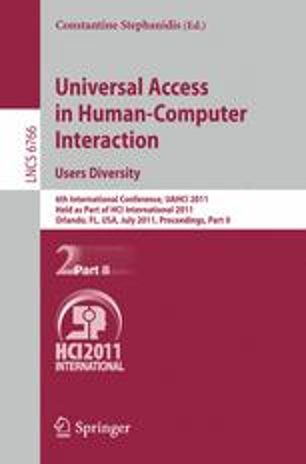 | Nazemi, Kawa; Burkhardt, Dirk; Breyer, Matthias; Kuijper, Arjan Modeling Users for Adaptive Semantics Visualizations Proceedings Article In: Stephanidis, Constantine (Ed.): Universal Access in Human-Computer Interaction. Users Diversity., pp. 88–97, Springer, Berlin, Heidelberg, Germany, 2011, ISBN: 978-3-642-21663-3. Abstract | Links | BibTeX | Dimensions | PlumX | Tags: Adaptive Visualization, Semantic Visualization, User Model @inproceedings{Nazemi2011c,The automatic adaptation of information visualization systems to the requirements of users plays a key-role in today's research. Different approaches from both disciplines try to face this phenomenon. The modeling of user is an essential part of a user-centered adaptation of visualization. In this paper we introduce a new approach for modeling users especially for semantic visualization systems. The approach consists of a three dimensional model, where semantic data, user and visualization are set in relation in different abstraction layer. | ||
| 13. | 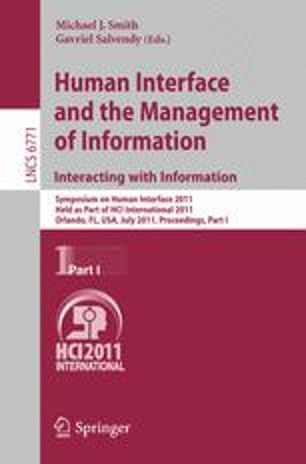 | Breyer, Matthias; Nazemi, Kawa; Stab, Christian; Burkhardt, Dirk; Kuijper, Arjan A Comprehensive Reference Model for Personalized Recommender Systems Proceedings Article In: Smith, Michael J.; Salvendy, Gavriel (Ed.): Human Interface and the Management of Information. Interacting with Information, pp. 528–537, Springer, Berlin, Heidelberg, Germany, 2011, ISBN: 978-3-642-21793-7. Abstract | Links | BibTeX | Dimensions | PlumX | Tags: Data Flow, Recommendation Calculation, Recommender Reference Model, Recommender System @inproceedings{Breyer2011,Existing reference models for recommender systems are on an abstract level of detail or do not point out the processes and transitions of recommendation systems. However, this information is relevant for developers to design or improve recommendation systems. Even so, users need some background information of the calculation process to understand the process and accept or configure these systems proper. In this paper we present a comprehensive reference model for recommender systems which conjuncts the recommendation processes on an adequate level of detail. To achieve this, the processes of content-based and collaboration-based systems are merged and extended by the transitions and phases of hybrid systems. Furthermore, the algorithms which can be applied in the phases of the model are examined to identify the data flow between these phases. With our model those information of the recommendation calculation process can be identified, which encourages the traceability and thus the acceptance of recommendations. | ||
| 12. |  | Nazemi, Kawa; Breyer, Matthias; Forster, Jeanette; Burkhardt, Dirk; Kuijper, Arjan Interacting with Semantics: A User-Centered Visualization Adaptation Based on Semantics Data Proceedings Article In: Smith, Michael J.; Salvendy, Gavriel (Ed.): Human Interface and the Management of Information. Interacting with Information, pp. 239–248, Springer Berlin Heidelberg, Berlin, Heidelberg, 2011, ISBN: 978-3-642-21793-7. Abstract | Links | BibTeX | Dimensions | PlumX | Tags: Linked Open Data, Semantic Visualization, Semantic Web @inproceedings{Nazemi2011b,Semantically annotated data gain more and more importance in future information acquiring processes. Especially the Linked Open Data (LOD) format has already experienced a great growth. However, the user-interfaces of web-applications mostly do not reflect the added value of semantics data. The following paper describes a new approach of user-centered data-adaptive semantics visualization, which makes use of the advantages of semantics data combined with an adaptive composition of information visualization techniques. It starts with a related work section, where existing LOD systems and information visualization techniques are described. After that, the new approach will bridge the gap between semantically annotated data (LOD) and information visualization and introduces a visualization system that adapts the composition of visualizations based on the underlying data structure. A case study of an example case will conclude this paper. | ||
| 11. | 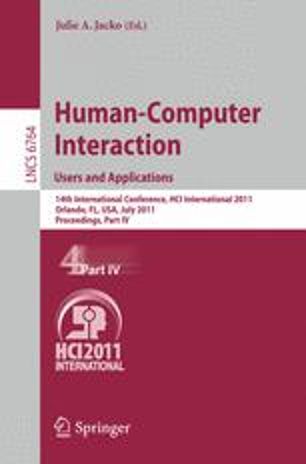 | Stab, Christian; Nazemi, Kawa; Breyer, Matthias; Burkhardt, Dirk; Kuijper, Arjan Interacting with Semantics and Time Proceedings Article In: Jacko, Julie A. (Ed.): Human-Computer Interaction. Users and Applications, pp. 520–529, Springer, Berlin, Heidelberg, Germany, 2011, ISBN: 978-3-642-21619-0. Abstract | Links | BibTeX | Dimensions | PlumX | Tags: Information Visualization, Semantic Search, Semantic Visualization, Time-Dependent Ontology, Timeline Visualization @inproceedings{Stab2011,Time appears in many different semantic information systems like historical databases, multimedia systems or social communities as a common attribute. Beside the temporal information, the resources in these domains are categorized in a domain-specific schema and interconnected by semantic relations. Nevertheless, the high potential of these systems is not yet exhausted completely. Even today most of these knowledge systems present time-dependent semantic knowledge in textual form, what makes it difficult for the average user to understand temporal structures and dependencies. For bridging this gap between human and computer and for simplifying the exploration of time-dependent semantic knowledge, we developed a new interactive timeline visualization called SemaTime. The new designed temporal navigation concept offers an intuitive way for exploring and filtering time-depended resources. Additionally SemaTime offers navigation and visual filtering methods on the conceptual layer of the domain and is able to depict semantic relations. In this paper we describe the conceptual design of SemaTime and illustrate its application potentials in semantic search environments. | ||
| 10. | 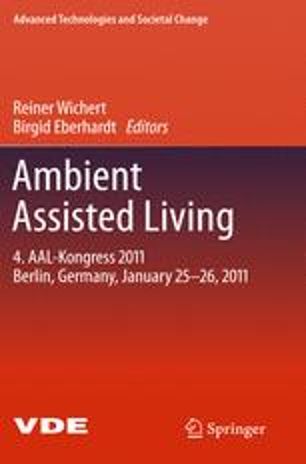 | Nazemi, Kawa; Burkhardt, Dirk; Stab, Christian; Breyer, Matthias; Wichert, Reiner; Fellner, Dieter W. Natural Gesture Interaction with Accelerometer-Based Devices in Ambient Assisted Environments Book Chapter In: Wichert, Reiner; Eberhardt, Birgid (Ed.): Ambient Assisted Living: 4. AAL-Kongress 2011, Berlin, Germany, January 25–26, 2011, Chapter 6, pp. 75–90, Springer, Berlin, Heidelberg, Germany, 2011, ISBN: 978-3-642-18167-2. Abstract | Links | BibTeX | Dimensions | PlumX | Tags: Gesture-based Interaction, Human-Centered Interfaces, Human-Computer Interaction @inbook{Nazemi2011b,Using modern interaction methods and devices enables a more natural and intuitive interaction. Currently, only mobile phones and game consoles which are supporting such gesture-based interactions have good payment-rates. This comes along, that such devices will be bought not only by the traditional technical experienced consumers. The interaction with such devices becomes so easy, that also older people playing or working with them. Especially older people have more handicaps, so for them it is difficult to read small text, like they are used as description to buttons on remote controls for televisions. They also become fast overstrained, so that bigger technical systems are no help for them. If it is possible to interact with gestures, all these problems can be avoided. But to allow an intuitive and easy gesture interaction, gestures have to be supported, which are easy to understand. Because of that fact, in this paper we tried to identify intuitive gestures for common interaction scenarios on computer-based systems for uses in ambient assisted environment. In this evaluation, the users should commit their opinion of intuitive gestures for different presented scenarios/tasks. Basing on these results, intuitively useable systems can be developed, so that users are able to communicate with technical systems on more intuitive level using accelerometer-based devices. | ||
| 9. |  | Burkhardt, Dirk; Nazemi, Kawa; Stab, Christian; Breyer, Matthias; Wichert, Reiner; Fellner, Dieter W. Natürliche Gesteninteraktion mit Beschleunigungssensorbasierten Eingabegeräten in unterstützenden Umgebungen Proceedings Article In: Ambient Assisted Living - AAL - 4. Deutscher Kongress: Demographischer Wandel - Assistenzsysteme aus der Forschung in den Markt, pp. 1–10, Verband der Elektrotechnik Elektronik Informationstechnik (VDE) VDE Verlag GmbH, Berlin, Germany, 2011, ISBN: 978-3-8007-3323-1. Abstract | Links | BibTeX | Tags: @inproceedings{Burkhardt2011,Die Verwendung von modernen Interaktionsmethoden und Geräten erlaubte eine natürlichere und intuitive Interaktion. Gegenwärtig haben lediglich die Smartphones und Spielekonsolen großen Absatz, welche eine gestenbasierte Interaktion unterstützen. Dies geht einher, dass solche Geräte nicht nur von technisch versierten Konsumenten gekauft werden. Die Interaktion mit solchen Geräten gestaltet sich so einfach, dass oftmals auch ältere Personen mit diesen spielen oder arbeiten. Insbesondere ältere Personen sind häufig gehandicapt, so haben sie oftmals Probleme kleinere Text zu lesen, wie sie häufig auf Fernbedienungen gedruckt sind. Ebenso neigen sie dazu, schnell überfordert zu sein, so dass gerade größere technische Systeme keine Hilfe sind. Wenn die Geräte mit Gesten steuerbar sind, sind die genannten Probleme oftmals vermeidbar. Um aber eine intuitive und einfache Gesteninteraktion zu ermöglichen, müssen entsprechend verständliche und nachvollziehbare Gesten unterstützt werden. Aus diesem Grund versuchen wir in diesem Paper intuitive Gesten für gängige Interaktionsszenarien an computerbasierten Systemen für den Einsatz in unterstützenden Umgebungen zu identifizieren. Im Rahmen der Evaluation sollen die Probanden hierfür ihre bevorzugten Gesten für die verschiedenen Interaktionsszenarien einbringen. Auf Grundlage der Ergebnisse kann später ein intuitiv bedienbares System, unter Verwendung eines beschleunigungssensorbasierten Geräts, entwickelt werden, mit welchem die Nutzer auf intuitive Weise kommunizieren können. | ||
2010 |
||||
| 8. | Nazemi, Kawa; Burkhardt, Dirk; Breyer, Matthias; Stab, Christian; Fellner, Dieter W. Semantic Visualization Cockpit : Adaptable Composition of Semantics-Visualization Techniques for Knowledge-Exploration Proceedings Article In: Auer, Michael; Schreurs, Jeanne (Ed.): Proceedings of Interactive Computer Aided Learning (ICL 2010), pp. 163–173, International Association of Online Engineering (IAOE) Kassel University Press, Kassel, Germany, 2010, ISBN: 978-3-89958-541-4. Abstract | Links | BibTeX | Tags: Explorative Learning, Intelligent User Interfaces, Semantic Visualization, Semantic Web @inproceedings{Nazemi2010c,Semantic-Web and ontology-based information processing systems are established technologies and techniques, in more than only research areas and institutions. Different worldwide projects and enterprise companies identified already the added value of semantic technologies and work on different sub-topics for gathering and conveying knowledge. As the process of gathering and structuring semantic information plays a key role in the most developed applications, the process of transferring and adopting knowledge to and by humans is neglected, although the complex structure of knowledge-design opens many research-questions. The following paper describes a new approach for visualizing semantic information as a composition of different adaptable ontology-visualization techniques. We start with a categorized description of existing ontology visualization techniques and show potential gaps. After that the new approach will be described and its added value to existing systems. A case study within the greatest German program for semantic information processing will show the usage of the system in real scenarios. | |||
| 7. | 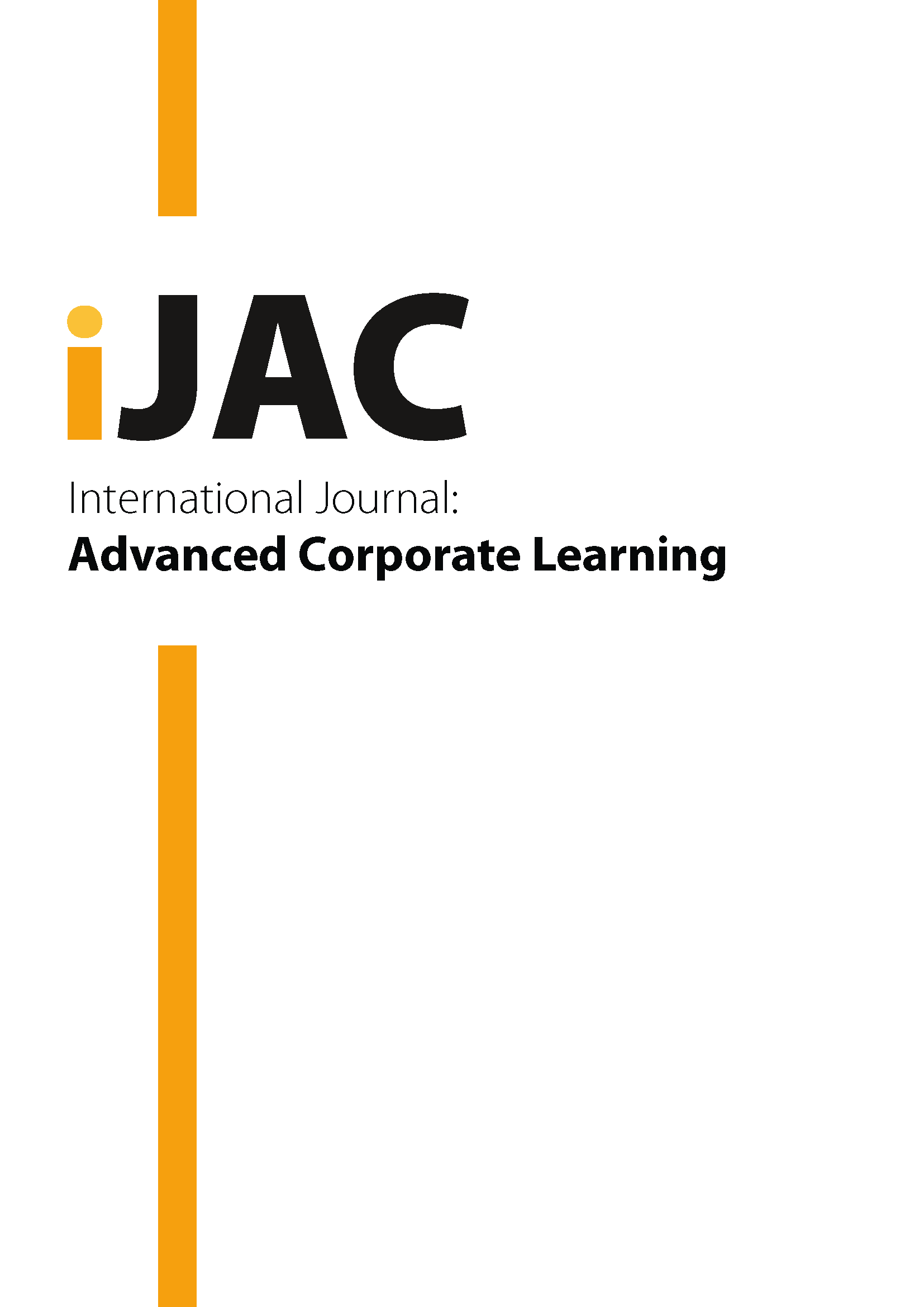 | Nazemi, Kawa; Breyer, Matthias; Burkhardt, Dirk; Fellner, Dieter W. Visualization Cockpit: Orchestration of Multiple Visualizations for Knowledge-Exploration Journal Article In: International Journal of Advanced Corporate Learning (iJAC), vol. 3, no. 4, pp. 26–34, 2010, ISSN: 1867-5565. Abstract | Links | BibTeX | Dimensions | PlumX | Tags: Exploratory Learning, Intelligent User Interfaces, Semantic Visualization, Semantic Web @article{Nazemi2010d,Semantic-Web technologies and ontology-based information processing systems are established techniques, in more than only research areas and institutions. Different worldwide projects and enterprise companies identified already the added value of semantic technologies, so they work on different sub-topics for gathering and conveying knowledge. As the process of gathering and structuring semantic information plays a key role in the most developed applications, the process of transferring and adopting knowledge to and by humans is neglected, although the complex structure of knowledge-design opens many research-questions. The customization of the presentation itself and the interaction techniques with these presentation artifacts is a key question for gainful and effective work with semantic information. The following paper describes a new approach for visualizing semantic information as a composition of different adaptable ontology-visualization techniques. We start with a categorized description of existing ontology visualization techniques and show potential gaps. | ||
| 6. | 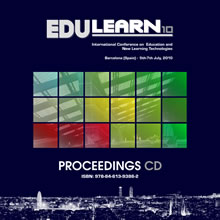 | Burkhardt, Dirk; Stab, Christian; Nazemi, Kawa; Breyer, Matthias; Fellner, Dieter W. Approaches for 3D-Visualizations and Knowledge Worlds for Exploratory Learning Proceedings Article In: Proceedings of the International Conference on Education and New Learning Technologies (EDULEARN 2010), pp. 6427-6437, IATED, Barcelona, Spain, 2010, ISSN: 2340-1117. Abstract | Links | BibTeX | Dimensions | PlumX | Tags: 3D Learning Environments, Explorative Learning, Semantic Visualization, Web-based Learning, Web-based Visualization @inproceedings{Burkhardt2010b,Graphical knowledge representations open promising perspectives to support the explorative learning on web. 2D-visualization are recently evaluated as gainful knowledge exploration systems, whereas 3D-visualization systems did not find their way into web-based explorative learning. 3D-visualizations or “Knowledge Worlds” comprise a high degree of authenticity, because the used metaphors are known by the users from the real world. But different challenges like the usage of 3D-Knowledge World without losing the learning context and the focused learning goals are rarely investigated and considered. New technologies provide the opportunity to introduce 3D-visualizations and environments on web to support a web-based explorative learning. Therefore it is necessary to investigate the prospects of 3D-visualization for transferring and adopting knowledge on web. The following paper describes different approaches to use 3D-visualization and Knowledge Worlds for conveying knowledge on web-based systems using web-based contents. First of all a short summary of existing approaches will be given, which try to convey knowledge by using 3D-metaphors. A survey of developed 3D-visualizations for knowledge exploration within semantically annotated content will show new ways and opportunities to explore and convey knowledge. Whereas only pure graphic-based systems will be described, which are developed in the context of a German research project. In contrast to 3D-visualization the so called 3D-Knowledge Worlds will be presented and described with their potential for constructivist and exploratory learning approaches. The paper will conclude with a summary of existing techniques in contrast to the developed ones to show the community the potential of the state-of-the-art systems in a kind of survey. | ||
| 5. | 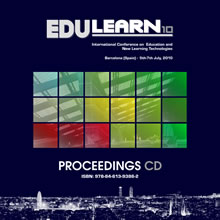 | Nazemi, Kawa; Breyer, Matthias; Stab, Christian; Burkhardt, Dirk; Fellner, Dieter W. Intelligent Exploration System - An Approach for User-Centered Exploratory Learning Proceedings Article In: Proceedings of the International Conference on Education and New Learning Technologies (EDULEARN 2010), pp. 6476–6484, IATED, Barcelona, Spain, 2010, ISSN: 2340-1117. Abstract | Links | BibTeX | Dimensions | PlumX | Tags: Adaptive Learning Systems, Explorative Learning, Intelligent Learning Systems, Intelligent Tutoring Systems, Semantic Knowledge Visualizations @inproceedings{Nazemi2010b,The recent technological developments in the area of social-networks and user generated content have already changed the learning behaviour of any learners. The exploration of knowledge through the world-wide-web using different content-provider, e.g. Wikipedia or IEEE Xplore plays a key role for researcher, students or knowledge workers. The usage of users’ knowledge or user generated content is a self-evident process within the working or learning workflow. Different approaches try to face the mass of information given in the WWW to support a more effective learning process, whereas semantic-technologies are a promising approach for organizing the knowledge. The formal knowledge descriptions like Ontologies used by Semantic Technologies only provide approaches to describe knowledge within a given and predefined knowledge-domain. The graphical representation of these domains provides another opportunity to explore the pre-engineered domain, whereas the learner with his individual learning aptitudes, learning behaviour and interests is not involved in the process of knowledge representation. The following paper describes the conceptual design of an Intelligent Exploration System (IES) that offers a user-adapted graphical environment of user generated web-based knowledge repositories, to support and optimize the explorative learning on web. The paper starts with a related work study followed by the comparative study of existing content-providing systems based on user generated content. The conceptual part of the paper will show how existing recommendation systems and interaction-analysis algorithms could be used to optimize both the content and the visual appearance of explorative knowledge visualizations. This part further shows actual results of graphical knowledge representations. The paper will be concluded with a case study of a knowledge worker in a research institution using the Intelligent Exploration System for his research work. | ||
| 4. | Burkhardt, Dirk; Hofmann, Cristian Erik; Nazemi, Kawa; Stab, Christian; Breyer, Matthias; Fellner, Dieter W. Intuitive Semantic-Editing for regarding Needs of Domain-Experts Proceedings Article In: Herrington, J.; Montgomerie, C. (Ed.): Proceedings of ED-MEDIA 2010--World Conference on Educational Multimedia, Hypermedia & Telecommunications, pp. 860–869, Association for the Advancement of Computing in Education (AACE), Waynesville, NC, 2010, ISBN: 978-1-880094-81-5. Abstract | Links | BibTeX | Tags: Human-Computer Interaction, Ontology, Semantic Editing, Semantic Web, User-Centered Interaction @inproceedings{Burkhardt2010,Ontologies are used to represent knowledge and their semantic information from different topics, to allow users a better way to explore knowledge and find information faster, because of the data-structuring. To achieve a well filled knowledgebase, editors have to be used, to enter new and to edit existing information. But most of the existing ontology-editors are designed for experienced ontology-experts. Experts from other topic fields e.g. physicians are often novices in the area of ontology-creating, they need adequate tools, which hide the complexity of ontology-structures. In the area of e-learning experts are also teachers as well. In this paper we will present a method, how the needs of domain-experts can be regarded and so an editor can designed, which allows an editing and adding of information by users without having experiences of creating ontologies. With such an editor domain-experts are able to commit their expert-knowledge into the ontology. | |||
| 3. | Hofmann, Cristian Erik; Burkhardt, Dirk; Breyer, Matthias; Nazemi, Kawa; Stab, Christian; Fellner, Dieter W. Towards a Workflow-based Design of Multimedia Annotation Systems Proceedings Article In: Herrington, J.; Montgomerie, C. (Ed.): Proceedings of ED-MEDIA 2010 - World Conference on Educational Multimedia, Hypermedia & Telecommunications, pp. 1224–1233, Association for the Advancement of Computing in Education (AACE), Waynesville, NC, 2010, ISBN: 978-1-880094-81-5 . Abstract | Links | BibTeX | Tags: Algorithm, Human-Computer Interaction, Multimedia Annotation System, Workflow @inproceedings{Hofmann2010,Annotation techniques for multimedia contents have found their way into multiple areas of daily use as well as professional fields. A large number of research projects can be assigned to different specific subareas of digital annotation. Nevertheless, the annotation process, bringing out multiple workflows depending on different application scenarios, has not sufficiently been taken into consideration. A consideration of respective processes and workflows requires detailed knowledge about practices of digital multimedia annotation. In order to establish fundamental groundwork towards workflow-related research, this paper presents a comprehensive process model of multimedia annotation which results from a conducted empirical study. Furthermore, we provide a survey of the tasks that have to be accomplished by users and computing devices, tools and algorithms that are used to handle specific tasks, and types of data that are transferred between workflow steps. These aspects are assigned to the identified sub-processes of the model. | |||
| 2. | Stab, Christian; Breyer, Matthias; Nazemi, Kawa; Burkhardt, Dirk; Hofmann, Cristian Erik; Fellner, Dieter W. SemaSun: Visualization of semantic knowledge based on an improved sunburst visualization metaphor Proceedings Article In: Herrington, J.; Montgomerie, C. (Ed.): Proceedings of ED-MEDIA 2010 - World Conference on Educational Multimedia, Hypermedia & Telecommunications, pp. 911–919, Association for the Advancement of Computing in Education (AACE), Waynesville, NC, 2010, ISBN: 1-880094-81-9. Abstract | Links | BibTeX | Tags: Ontology Visualization, Semantic Web, Sunburst Visualization @inproceedings{Stab2010,Ontologies have become an established data model for conceptualizing knowledge entities and describing semantic relationships between them. They are used to model the concepts of specific domains and are widespread in the areas of the semantic web, digital libraries and multimedia database management. To gain the most possible benefit from this data model, it is important to offer adequate visualizations, so that users can easily acquire the knowledge. Most ontology visualization techniques are based on hierarchical or graph-based visualization metaphors. This may result in information-loss, visual clutter, cognitive overload or context-loss. In this paper we describe a new approach of ontology visualization technique called SemaSun that is based on the sunburst visualization metaphor. We improved this metaphor, which is naturally designed for displaying hierarchical data, to the tasks of displaying multiple inheritance and semantic relations. This approach also offers incremental ontology exploring to reduce the cognitive load without losing the informational context. | |||
2009 |
||||
| 1. | 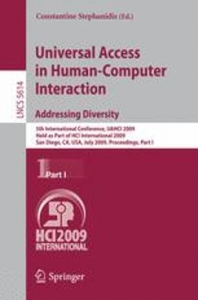 | Burkhardt, Dirk; Nazemi, Kawa; Bhatti, Nadeem; Hornung, Christoph Technology Support for Analyzing User Interactions to Create User-Centered Interactions Proceedings Article In: Stephanidis, Constantine (Ed.): Universal Access in Human-Computer Interaction. Addressing Diversity, pp. 3–12, Springer Berlin Heidelberg, Berlin, Heidelberg, 2009, ISBN: 978-3-642-02707-9. Abstract | Links | BibTeX | Dimensions | PlumX | Tags: Gesture Recognition, Human-Computer Interaction, User-Centered Interaction @inproceedings{Burkhardt2009,Alternative interaction devices become more important in the communication between users and computers. Parallel graphical User Interfaces underlay a continuous development and research. But today does no adequate connection exist between these both aspects. So if a developer wants to provide an alternative access over more intuitive interaction devices, he has to implement this interaction-possibility on his own by regarding the users perception. A better way to avoid this time-consuming development-process is presented in this paper. This method can easy implement by a developer and users get the possibility to interact on intuitive way. | ||
2011 |
||||
| 16. |  | SemaZoom: Semantics Exploration by Using a Layer-Based Focus and Context Metaphor Proceedings Article In: Kurosu, Masaaki (Ed.): Human Centered Design, pp. 491–499, Springer, Berlin, Heidelberg, Germany, 2011, ISBN: 978-3-642-21753-1. | ||
| 15. |  | Adapting User Interfaces by Analyzing Data Characteristics for Determining Adequate Visualizations Proceedings Article In: Kurosu, Masaaki (Ed.): Human Centered Design, pp. 566–575, Springer, Berlin, Heidelberg, Germany, 2011, ISBN: 978-3-642-21753-1. | ||
| 14. |  | Modeling Users for Adaptive Semantics Visualizations Proceedings Article In: Stephanidis, Constantine (Ed.): Universal Access in Human-Computer Interaction. Users Diversity., pp. 88–97, Springer, Berlin, Heidelberg, Germany, 2011, ISBN: 978-3-642-21663-3. | ||
| 13. |  | A Comprehensive Reference Model for Personalized Recommender Systems Proceedings Article In: Smith, Michael J.; Salvendy, Gavriel (Ed.): Human Interface and the Management of Information. Interacting with Information, pp. 528–537, Springer, Berlin, Heidelberg, Germany, 2011, ISBN: 978-3-642-21793-7. | ||
| 12. |  | Interacting with Semantics: A User-Centered Visualization Adaptation Based on Semantics Data Proceedings Article In: Smith, Michael J.; Salvendy, Gavriel (Ed.): Human Interface and the Management of Information. Interacting with Information, pp. 239–248, Springer Berlin Heidelberg, Berlin, Heidelberg, 2011, ISBN: 978-3-642-21793-7. | ||
| 11. |  | Interacting with Semantics and Time Proceedings Article In: Jacko, Julie A. (Ed.): Human-Computer Interaction. Users and Applications, pp. 520–529, Springer, Berlin, Heidelberg, Germany, 2011, ISBN: 978-3-642-21619-0. | ||
| 10. |  | Natural Gesture Interaction with Accelerometer-Based Devices in Ambient Assisted Environments Book Chapter In: Wichert, Reiner; Eberhardt, Birgid (Ed.): Ambient Assisted Living: 4. AAL-Kongress 2011, Berlin, Germany, January 25–26, 2011, Chapter 6, pp. 75–90, Springer, Berlin, Heidelberg, Germany, 2011, ISBN: 978-3-642-18167-2. | ||
| 9. |  | Natürliche Gesteninteraktion mit Beschleunigungssensorbasierten Eingabegeräten in unterstützenden Umgebungen Proceedings Article In: Ambient Assisted Living - AAL - 4. Deutscher Kongress: Demographischer Wandel - Assistenzsysteme aus der Forschung in den Markt, pp. 1–10, Verband der Elektrotechnik Elektronik Informationstechnik (VDE) VDE Verlag GmbH, Berlin, Germany, 2011, ISBN: 978-3-8007-3323-1. | ||
2010 |
||||
| 8. | Semantic Visualization Cockpit : Adaptable Composition of Semantics-Visualization Techniques for Knowledge-Exploration Proceedings Article In: Auer, Michael; Schreurs, Jeanne (Ed.): Proceedings of Interactive Computer Aided Learning (ICL 2010), pp. 163–173, International Association of Online Engineering (IAOE) Kassel University Press, Kassel, Germany, 2010, ISBN: 978-3-89958-541-4. | |||
| 7. |  | Visualization Cockpit: Orchestration of Multiple Visualizations for Knowledge-Exploration Journal Article In: International Journal of Advanced Corporate Learning (iJAC), vol. 3, no. 4, pp. 26–34, 2010, ISSN: 1867-5565. | ||
| 6. |  | Approaches for 3D-Visualizations and Knowledge Worlds for Exploratory Learning Proceedings Article In: Proceedings of the International Conference on Education and New Learning Technologies (EDULEARN 2010), pp. 6427-6437, IATED, Barcelona, Spain, 2010, ISSN: 2340-1117. | ||
| 5. |  | Intelligent Exploration System - An Approach for User-Centered Exploratory Learning Proceedings Article In: Proceedings of the International Conference on Education and New Learning Technologies (EDULEARN 2010), pp. 6476–6484, IATED, Barcelona, Spain, 2010, ISSN: 2340-1117. | ||
| 4. | Intuitive Semantic-Editing for regarding Needs of Domain-Experts Proceedings Article In: Herrington, J.; Montgomerie, C. (Ed.): Proceedings of ED-MEDIA 2010--World Conference on Educational Multimedia, Hypermedia & Telecommunications, pp. 860–869, Association for the Advancement of Computing in Education (AACE), Waynesville, NC, 2010, ISBN: 978-1-880094-81-5. | |||
| 3. | Towards a Workflow-based Design of Multimedia Annotation Systems Proceedings Article In: Herrington, J.; Montgomerie, C. (Ed.): Proceedings of ED-MEDIA 2010 - World Conference on Educational Multimedia, Hypermedia & Telecommunications, pp. 1224–1233, Association for the Advancement of Computing in Education (AACE), Waynesville, NC, 2010, ISBN: 978-1-880094-81-5 . | |||
| 2. | SemaSun: Visualization of semantic knowledge based on an improved sunburst visualization metaphor Proceedings Article In: Herrington, J.; Montgomerie, C. (Ed.): Proceedings of ED-MEDIA 2010 - World Conference on Educational Multimedia, Hypermedia & Telecommunications, pp. 911–919, Association for the Advancement of Computing in Education (AACE), Waynesville, NC, 2010, ISBN: 1-880094-81-9. | |||
2009 |
||||
| 1. |  | Technology Support for Analyzing User Interactions to Create User-Centered Interactions Proceedings Article In: Stephanidis, Constantine (Ed.): Universal Access in Human-Computer Interaction. Addressing Diversity, pp. 3–12, Springer Berlin Heidelberg, Berlin, Heidelberg, 2009, ISBN: 978-3-642-02707-9. | ||
